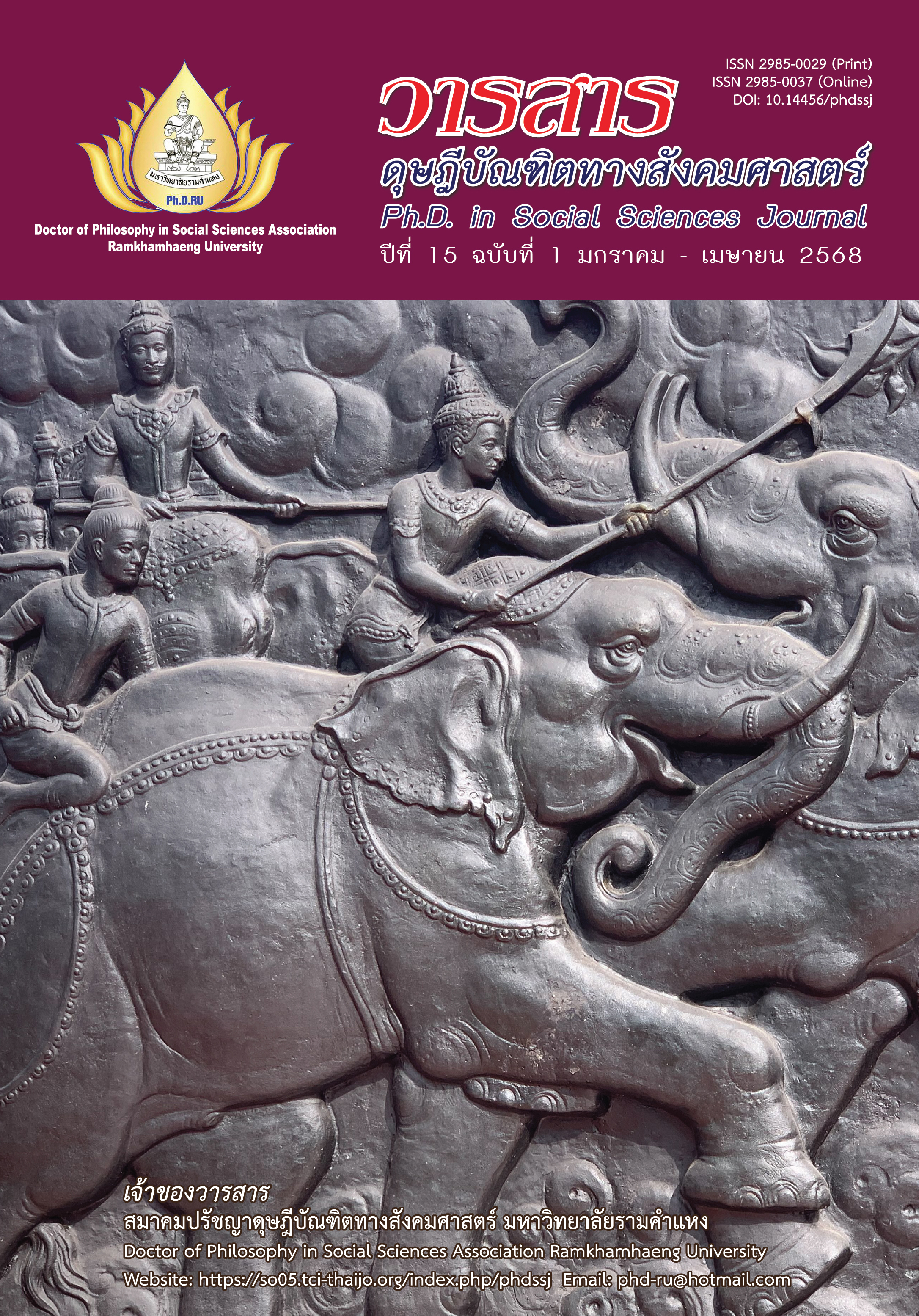Factors Influencing Thai Rice Exports to Africa
Main Article Content
Abstract
This research article aims to study factors influencing Thai rice exports to Africa. The study uses statistical data on domestic factors, external factors of the country, and the value of rice exports to African countries between 2003 and 2022, It conducts a panel data analysis using the gravity model to find factors influencing Thai rice exports to Africa.
Findings are as follows: the domestic factors significant to Thai rice exports are the quantity of Thai rice production, and Thai rice export price (F.O.B.). The external factors significant to Thai rice exports are Vietnam’s rice production volume, Indian rice export price, GDP per capita of Thai rice importing countries, WTO membership status of Thai rice importing countries, and the distance between Thailand and Thai rice importing countries in Africa.
Article Details

This work is licensed under a Creative Commons Attribution-NonCommercial-NoDerivatives 4.0 International License.
Academic articles, research articles, and book reviews in the Ph.D. in Social Sciences Journal are author’s opinions, and not the publisher’s, and is not the responsibility of the Ph.D. in Social Sciences Journal Philosophy Association, Ramkhamhaeng University. (In the case that research is done on human, the researcher has to be trained in Ethics for Doing Research on Human Training and has to produce the evidence of the training).
References
Anderson, J. E. (1979). A theoretical foundation of the gravity equation. The American Economic Review, 69(1), 106-116.
Awirothananon, T., Thanjunpong, S., & Jamlongrat, N. (2020). Factors affecting the value of rice exports in the Chinese market. RMUTL Journal of Business Administration and Liberal Arts, 8(2), 1-12. [In Thai]
Bergstrand, J. H. (1985). The gravity equation in international trade: Some microeconomic foundations and empirical evidence. The Review of Economics and Statistics, 67(3), 474-481.
Bui, T. H. H., & Chen, Q. (2017). An analysis of factors influencing rice export in Vietnam based on gravity model. Journal of the Knowledge Economy, 8(3), 830-844.
Chuaykerd, T., Yao, S., Khamphilavong, S., & Tuyen, H. T. (2020). The impact factors of Thai Jasmine rice export to international market. Open Journal of Business and Management, 8, 1113-1121.
Department of Foreign Trade. (2022). Rice insights, Africa region. Retrieved from https://www.dft.go.th/Portals/49/ebook/ข้อมูลข้าวเชิงลึกภูมิภาคแอฟริกา.pdf [In Thai]
Homkachorn, K. (2017). International economics (2nd ed.). Ramkhamhaeng University Press. [In Thai]
International Monetary Fund. (2023). World economic outlook database. Retrieved from https://www.imf.org/en/Publications/WEO/weo-database/2023/October
Jankulovski, N., & Khan, U. E. (2022). Asian rice exports and the European demand: An application of the modified panel gravity model. Journal of Agricultural Science, 14(8), 18-29.
Kea, S., Li, H., Shahriar, S., Abdullahi, N. M., Phoak, S., & Touch, T. (2019). Factors influencing Cambodian rice exports: An application of the dynamic panel gravity model. Emerging Markets Finance and Trade, 55(15), 3631-3652.
Leelawattanapan, T., & Chaiboonsri, C. (2012). Factors affecting Thailand’s major agricultural exports using panel cointegration method. In 4th International Conference on Humanities and Social Sciences (pp. 1-10). Prince of Songkla University, Faculty of Liberal Arts, [In Thai]
Nguyen, D. D. (2022). Determinants of Vietnam’s rice and coffee exports: Using stochastic frontier gravity model. Journal of Asian Business and Economic Studies, 29(1), 19-34.
Rakthanyakarn, A., & Chaiprasit, K. (2019). Factors affecting the export of Thai Jasmine rice to the international market. MBA-KKU Journal, 12(1), 150-164. [In Thai]
Salvatore, D. (2013). International economics (11th ed). John Wiley & Sons.
Smith, A. (1937). An inquiry into the nature and causes of the wealth of nations. Modern Library. United States Department of Agriculture. (2023). Grain: World markets and trade. Retrieved from https://www.fas.usda.gov/data/grain-world-markets-and-trade
Yusiana, E., Hakim, D. B., Syaukat, Y., & Novianti, T. (2022). Analysis of factors influencing Thai rice trade based on gravity model. Retrieved from https://iopscience.iop.org/ article/10.1088/1755-1315/951/1/012039/pdf


